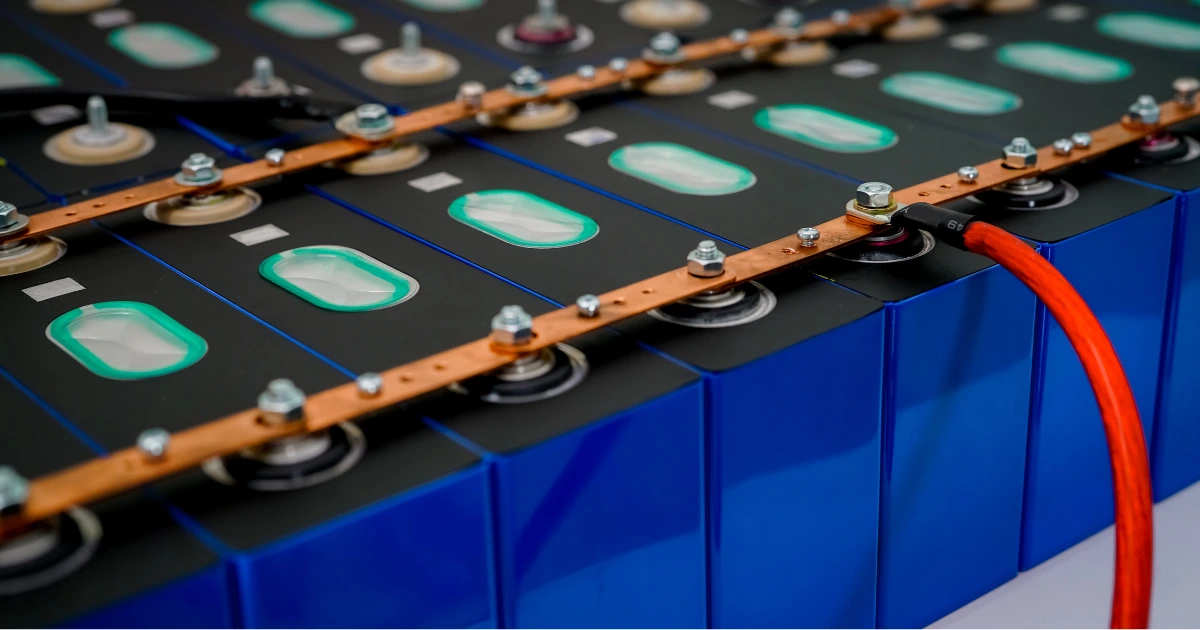Advanced Guide to Electric Bike Battery: Types, Features, and Performance
Electric bike battery are the power source that defines the functionality and efficiency of e-bikes. Acting as the heart of the system, these batteries supply the energy required to propel the bike and support auxiliary functions. Choosing the right battery is critical for maximizing performance, extending the bike’s lifespan, and ensuring a smooth riding experience. With the growing variety of batteries available, understanding their differences is more important than ever.
Table of Contents
How Electric Bike Battery Work
Electric bike batteries store energy chemically and convert it into electrical power, which drives the motor and other systems. Key factors like voltage, capacity, and energy density influence their performance. Voltage determines the motor’s power output, while capacity (measured in amp-hours) dictates how long the battery can sustain that output. High energy density ensures optimal performance without adding excessive weight, making it essential for a balanced and efficient e-bike.
Types of Electric Bike Batteries
batteries for Electric bikes are available in various chemistries, each offering distinct features.
- Lithium-Ion Batteries: Lightweight, durable, and efficient, they dominate the market.
- Nickel-Metal Hydride (NiMH) Batteries: An older technology with moderate energy density but less efficiency.
- Lead-Acid Batteries: Affordable and durable but heavy and less energy-efficient.
- Solid-State Batteries: Emerging technology with immense potential for high energy density and safety.
Key Features to Consider

When evaluating electric bike battery, these features are crucial:
- Voltage and Wattage: Higher voltage translates to more power, while wattage reflects energy usage over time.
- Amp-Hour (Ah) Rating: This determines the battery’s runtime and overall range.
- Lifespan and Charge Cycles: Measured in charge cycles, a higher number signifies better longevity.
- Weight and Size: Lightweight and compact batteries improve bike handling and portability.
Lithium-Ion Batteries: The Industry Standard
Lithium-ion batteries have revolutionized electric bike technology due to their high energy density, fast charging capabilities, and long lifespan. Lithium Iron Phosphate (LiFePO4) batteries provide improved safety and a longer lifespan. However, they must be handled with care, as problems such as overcharging can diminish their efficiency over time.
Other Battery Chemistries in Comparison
Though lithium-ion batteries dominate, other chemistries still find niche applications:
- Lead-Acid Batteries: Rugged and economical but bulky and inefficient.
- NiMH Batteries: Provide moderate performance but lag behind in weight-to-energy ratio.
- Solid-State Batteries: Offer exciting advancements in safety and energy density, though they are still in the early stages of adoption.
Factors Affecting Battery Performance
Several external factors can influence an electric bike battery’s performance:
- Terrain and Riding Style: Steep inclines and aggressive riding can drain the battery faster.
- Temperature: Extreme heat or cold reduces efficiency and longevity.
- Maintenance: Proper care, such as regular cleaning and correct storage, ensures consistent performance.
Choosing the Right Electric Bike Battery
Selecting the ideal battery involves matching its specifications with your e-bike model and riding needs. Consider the following:
- Compatibility: Ensure the battery works with your bike’s motor system.
- Range Expectations: Long-distance riders need higher capacity batteries.
- Cost vs. Performance: Finding the right balance between cost and quality is essential.
Charging Electric Bike Batteries
Proper charging practices extend a battery’s life and ensure safe operation. Stick to these tips:
- Use Manufacturer-Approved Chargers: They’re designed to meet the battery’s specific requirements.
- Avoid Overcharging: Disconnect the charger promptly to prevent damage.
- Fast Charging: Convenient but may reduce battery lifespan over time—use it sparingly.
Battery Range and Efficiency
The range is a critical measure of how far a battery for electric bike can travel on a single charge. It’s influenced by several factors, including terrain, rider weight, and speed. To maximize range, maintain steady speeds, keep tires properly inflated, and avoid frequent starts and stops. Real-world usage often varies from manufacturers’ ideal range ratings, so account for these discrepancies when planning rides.
Replacing and Maintaining Electric Bike Batteries: A Comprehensive Guide

e bike battery replacement
e bike battery replacement is an important decision that impacts both the performance and lifespan of your bike.
- Signs Your Battery Needs Replacement: Look out for reduced range, inconsistent performance, or a refusal to hold a charge. Swelling or visible damage also indicate it’s time for a change.
- Cost Considerations: Replacement costs vary widely, from $200 for basic models to over $1,000 for premium batteries like 48V and 72V packs used in high-performance bikes.
- DIY vs. Professional Replacement: While DIY replacement is feasible for tech-savvy users, professional help ensures safety and optimal performance.
Battery Recycling and Disposal
Ensuring the proper disposal of ebike batteries is crucial for protecting the environment.
- Environmental Concerns: Electric bike batteries, especially those containing lithium, can leak harmful chemicals if discarded improperly.
- Proper Recycling Methods: Local recycling centers, manufacturer return programs, and dedicated e-waste facilities handle battery disposal responsibly.
- Brands Promoting Sustainability: Companies like Bosch and Shimano focus on eco-friendly practices, offering recycling programs and promoting reusable materials.
Accessories and Tools for Battery Maintenance
Enhance your battery care routine with the right accessories and tools.
- Must-Have Tools: A multimeter for checking voltage, thermal sensors to monitor temperature, and a torque wrench for secure connections.
- Portable Chargers: Compact and lightweight, these chargers are ideal for on-the-go recharges, especially for 48V and 72V batteries.
- Battery Management Systems (BMS): Integrated BMS helps monitor health, prevent overcharging, and optimize performance.
Common Issues with Electric Bike Batteries
Even the best batteries encounter problems, but many are solvable with proper care.
- Troubleshooting Dead Batteries: Ensure connections are secure and fuses intact. Test voltage output with a multimeter.
- Diagnosing Capacity Degradation: Noticeable drops in range or runtime signal capacity issues, which may require recalibration or replacement.
- Solutions for Overheating Batteries: Prevent overheating by storing batteries in a cool, dry place and avoiding prolonged high-output usage.
Innovations in Battery Technology
Battery technology is rapidly evolving, paving the way for greater efficiency and convenience.
- Advancements in Energy Density: Modern batteries boast improved energy density, allowing for lightweight designs with higher capacities, such as 48V for urban commutes and 72V for power riders.
- Wireless Charging: While still emerging, this technology promises hassle-free charging without connectors.
- Future Trends: Solid-state batteries and self-healing chemistries are set to revolutionize the industry with enhanced durability and safety.
Leading Brands in the Market
The e-bike battery market is dominated by reliable and innovative brands.
- Bosch Batteries: Known for exceptional performance and longevity, Bosch batteries are popular among commuters and enthusiasts.
- Shimano STEPS: Compact and efficient, these batteries integrate seamlessly with Shimano’s motor systems.
- Specialized Brands: Long-distance riders often choose brands like Samsung SDI for their high-capacity cells.
Budget-Friendly Battery Options

Affordable options ensure casual riders don’t break the bank.
- Affordable Alternatives: Brands like Joyisi and Unit Pack Power offer dependable 36V and 48V batteries at lower prices.
- Refurbished Batteries: These can save money but come with risks such as limited warranty and unpredictable performance.
- Evaluating Value: Focus on reputable sellers and compatibility with your e-bike model to maximize cost-effectiveness.
High-Performance Batteries for Power Users
Premium batteries cater to demanding riders who prioritize power and endurance.
- Features of Premium Models: High watt-hour ratings, robust BMS, and quick charging times.
- Ideal Applications: 72V batteries excel in rugged terrains and long-distance touring, offering unparalleled torque and speed.
- Balancing Performance with Durability: These batteries are engineered to endure high-stress conditions while maintaining efficiency.
Myths About Electric Bike Batteries
Misconceptions about e-bike batteries often lead to improper care and reduced efficiency.
- Debunking Misconceptions: Many believe frequent charging harms the battery, but modern BMS systems prevent overcharging.
- Clarifying Charging Myths: It’s unnecessary to drain a lithium-ion battery completely before recharging.
- Separating Facts from Marketing Claims: Buzzwords like “ultra-fast charging” often ignore the trade-offs in lifespan and efficiency.
Understanding electric bike batteries ensures an informed decision-making process for replacement, maintenance, and upgrades. From choosing between an electric bike battery 48V or electric bike battery 72V battery to adopting sustainable practices, knowledge empowers riders to optimize their e-bike experience. Prioritize quality and compatibility to enjoy long-lasting performance and reliability.
FAQ
Why won’t my e-bike battery turn on?
There are several reasons why your e-bike battery might not turn on. First, check if the battery is properly connected to the bike and ensure it’s fully charged. If the battery is still not turning on, there could be an issue with the battery’s internal circuitry, or it might be dead. It’s also possible the battery’s power button or switch is malfunctioning, or there may be an issue with the bike’s wiring or the controller. Try resetting the system or checking for loose connections.
Is it okay to not fully charge an e-bike battery?
While it’s ideal to fully charge your e-bike battery occasionally, it is generally okay to leave the battery partially charged. Lithium-ion batteries, which are commonly used in electric bikes, do not suffer from memory issues like older types of batteries. However, frequent deep discharges (letting the battery go to 0%) can reduce the lifespan of the battery. Aim to charge your battery when it’s between 20-80% for optimal longevity.
Should you fully charge your e-bike battery?
It’s good practice to fully charge your e-bike battery from time to time, especially before long rides. However, it’s important not to overcharge it frequently. Most modern e-bike batteries have built-in protection mechanisms to prevent overcharging, but constantly charging the battery to 100% can reduce its overall lifespan over time. Charging between 20% and 80% regularly is generally considered best for maintaining the health of your battery.
How to power an electric bike without a battery?
Without a battery, your electric bike cannot operate as intended since the battery powers the motor. However, you can still use the bike as a regular manual bike, relying purely on pedaling. Some e-bikes may also have a pedal assist feature that still works without the battery, but the motor will not engage. If you are in need of power and your battery is dead or missing, consider looking for a replacement or using the bike in its non-electric mode.
How do I replace my e-bike battery?
Follow manufacturer instructions and use compatible replacement batteries to ensure safety.

